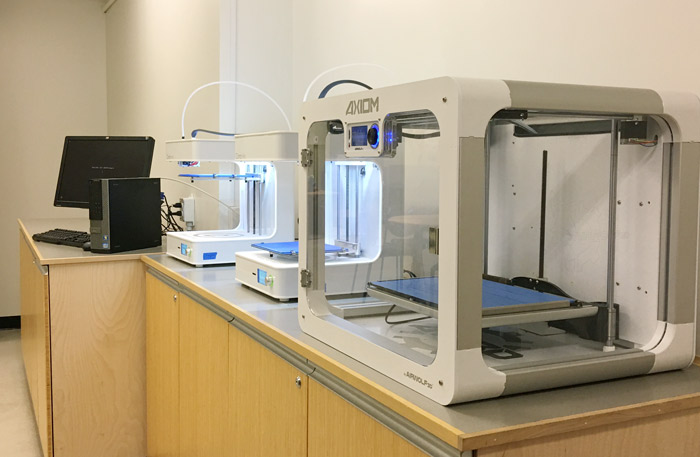On Jan. 11, the McLennan Library held this year’s first “Introduction to 3-D Printing” workshop. The workshop taught procedures necessary for students to get access to the library’s newly acquired 3-D printers under the Research Commons initiative launched in September 2016.
3-D printing, sometimes known as additive manufacturing, involves printing successive layers of materials, often plastics, in precise forms to create an object under computer control.
While McGill University has several 3-D printers of various sizes and types, most are located away from the general student populace in labs and restricted to professors or researchers in certain faculties. The Research Commons is making this new and promising technology more accessible. Currently, three 3-D printers are available to students at the McLennan Library: Two Tinkerine Ditto Pro’s and one AirWolf AxiomE. In addition to the 3-D printers, the Research Commons offers an array of advanced technologies, including a data visualization video wall, virtual reality kits, and a 3-D scanner.
The 3-D printers were placed in McLennan Library in an effort to make them easily accessible to the majority of students at McGill.
“It’s in a convenient location,” Chantal Petgrave, U2 Industrial Relations and 3-D printing tutor, said. “A lot of students, no matter what faculty they are in, are going to come to McLennan library so it just gives easier access to 3-D printing. I think it also allows students who won’t normally be interested in 3-D printing an opportunity to discover something new.”
The workshop, hosted by Petgrave, introduced the basics of 3-D printing, including how to use 3DPrinterOS–the cloud-based online platform which the library uses to manage 3-D printers–and the procedure for students to use to start printing their own objects.
After completing the workshop, students can book time on 3-D printers through the Research Commons subpage on the McGill Library website–similarly to booking study rooms. While several colour choices are available in terms of print material, the 3-D printers are restricted to only print in Polylactic Acid (PLA), as other common plastics, such as Acrylonitrile Butadiene Styrene (ABS) produce toxic fumes which require powerful ventilation infrastructure–something which the library space does not currently have.
According to Michael Groenendyk, the Research Commons staff member managing the 3-D printing service, it took McGill about a year and a half of planning to join the growing list of Canadian universities operating 3-D printing centres dedicated to students and faculty. Groenendyk acknowledged McGill has had a relatively late start compared to other universities, but highlighted the advantages of being a late adopter.
“We are only a few years behind, but [3-D printing] is becoming very popular,” Groenendyk said. “Ours is done better than the other ones, which is kind of the benefit of doing it later, as you can see all the mistakes and different ways people do it and assess everything.”
During a pilot trial run in the Fall 2016 semester, 3-D printing was free of charge to students. Starting this semester, students will be charged one dollar per hour of printing plus the cost of materials. There is a minimum of two dollars per job as the service transitions from a pilot project to a service.
“The rate of one dollar per hour will be applied after the model has been completely successfully,” Groenendyk wrote in an email to Tribune. “I won’t charge for failed prints.”
So far, Groenendyk estimates 150 students have completed the workshop.
Even with the price increase, the Research Commons 3-D printing service is possibly the cheapest and most accessible 3-D printing option in Montreal for McGill students.








